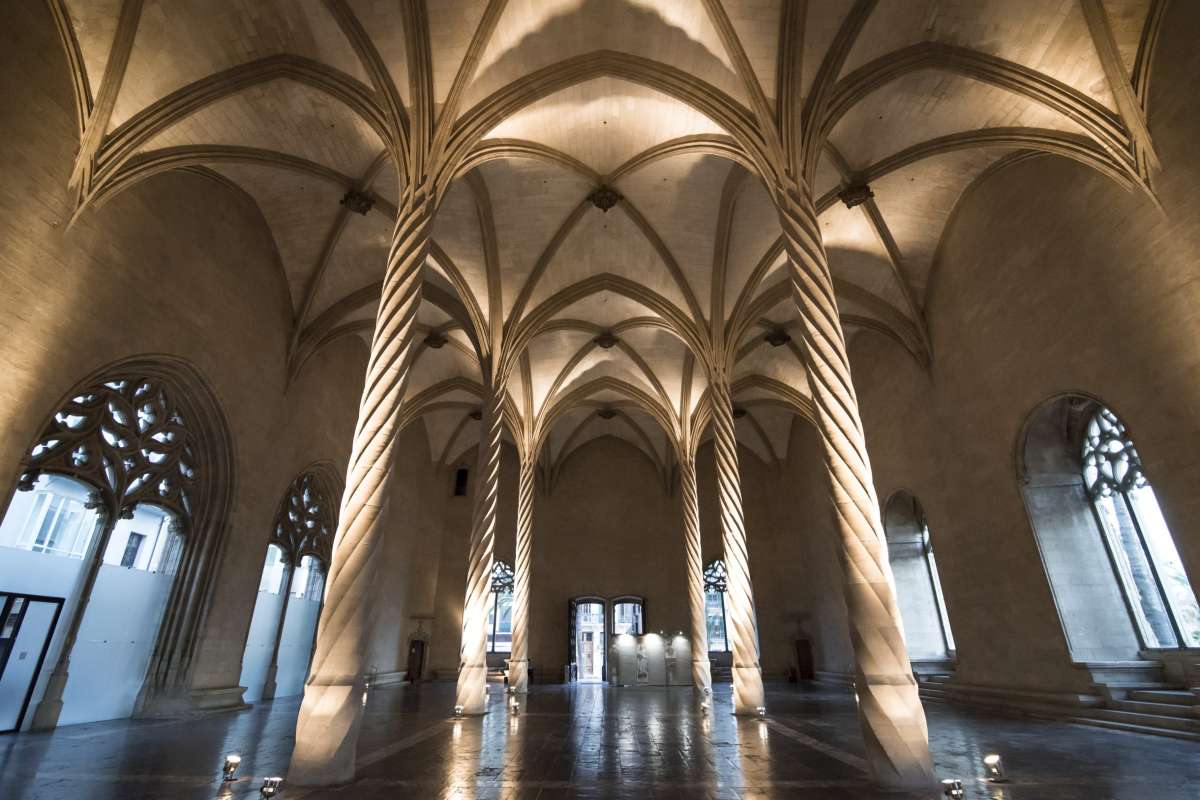
Gothic art in the Lonja of Palma
The Lonja of Palma lost its main function long ago to become a space for art and culture. This architectural gem of Gothic style in Palma is one of the most visited, along with the Cathedral, but in this case, it enjoys a popularity that extends beyond sunset. The nearby terraces, restaurants, and bars, along with the views of the majestic building, offer all kinds of gastronomic proposals.
Its mission: to ennoble the merchant profession
The Merchants' Guild of Mallorca commissioned this public building to the architect Guillem Sagrera. It was the year 1426, and the intention of the collective was not only to meet the needs of buying and selling products but also to give a more noble air to the merchant's trade. The project had to be grand, adorned with saints and angels, and impressive both inside and out.
Sombre façade with advanced Gothic details
The Lonja of Palma is an almost cubic construction, with four very sober facades that contrast with the richness of the interior. However, simplicity is not without purpose: the moldings that frame the openings, the open gallery, and the battlements on the upper part attract the gaze to this building, which is both palatial and military, representing so well the civil Gothic art that would inspire similar constructions in Valencia and later periods.
The angel of the Lonja of Palma
Despite being a civil building, the era required religious elements. The guardian angel located in the doorway stands out, a large sandstone sculpture attributed to Guillem Sagrera himself, who, in addition to being an architect, was also a sculptor.
Many art historians have marveled at the delicacy of the sculpture, the details of its wings, and the style, somewhere between flamboyant Gothic and the most exquisite Quattrocento, a character that the author would perfect in the Castell Nuovo of Naples.
The mission of the angel is reflected in the scroll it holds between its hands: "Defender of Merchandise".
Stone palm trees in the interior
Upon entering the doors of the Lonja, a space opens up that completely changes the perception of the building and the sensations emanating from its façade.
Before the visitor, a hall opens up with three aisles of the same height, separated by six columns, stylized and elegant, lacking capitals, and blending with the ribbed vaults of the ceiling through helical grooves that run along the entire shaft, giving them the appearance of magnificent stone palm trees.
The light that enters through the windows and the height and narrowness of the columns result in the sensation of being in a spacious and airy place, exactly what was intended when the commission was carried out: a market where vendors could display their merchandise without constraints, and where buyers could easily move from one stall to another.
It doesn't matter that the uses of this building of Mallorcan Gothic have changed. The Lonja remains undisturbed, once by the seaside and now surrounded by streets and promenades.
Attending an exhibition in this space is spectacular, but even when empty, it impresses with its majesty and still recalls the echoes of the announcements of the old merchants and the requests of the buyers.
